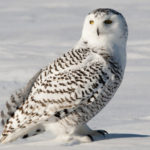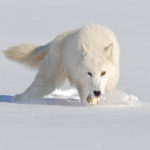13 interesting facts about the polar night and the day
 At the poles of our planet, the change of day and night does not proceed at all like we used to. A polar night, like a day, can last from weeks to months, depending on where you are located. However, in those parts where their duration is calculated for months, people do not live because of an excessively harsh climate.
At the poles of our planet, the change of day and night does not proceed at all like we used to. A polar night, like a day, can last from weeks to months, depending on where you are located. However, in those parts where their duration is calculated for months, people do not live because of an excessively harsh climate.
Long-term living in such conditions can lead to serious health problems after years. Such conclusions were made by scientists who studied the effect of a long day/night cycles on the human body.
In the conditions of the polar night, many people experience depression, because due to the lack of sunlight in their body, the production of serotonin, also called the “hormone of happiness,” decreases.
Living in the polar day and polar night is often the cause of permanent stress and sleep disturbances.
The polar day looks very strange – from the position of the observer it seems that the Sun circles in circles above the horizon, but does not set.
During the polar night, some animals living in the circumpolar regions hibernate. Plants act in much the same way – their life activity slows down, and they temporarily turn into a state close to suspended animation.
The ancient Greek astronomer Bion created the theory of the existence of a polar night and day, despite the fact that in ancient Greece there were no such conditions. And he was right.
Northern lights are most often observed precisely during the polar night.
In the Far North, where there are cities and towns, the polar night is more like twilight. There is no sunshine, but still it’s not so dark there that it looks like a real night. However, it all depends on the specific place.
At the latitude of the Arctic Circle, the polar night is the shortest, where it lasts only about two days. And at the North and South Poles its duration is almost six months.
Night and day are called polar if their duration exceeds one day.
In the days of the equinox due to atmospheric refraction, it visually seems that the Sun shines simultaneously at the North and South Poles.
Russian Murmansk is the largest city on the planet among those in which there are polar days and nights.
At the North Pole, the polar night is 6 days shorter than at the South Pole.



























